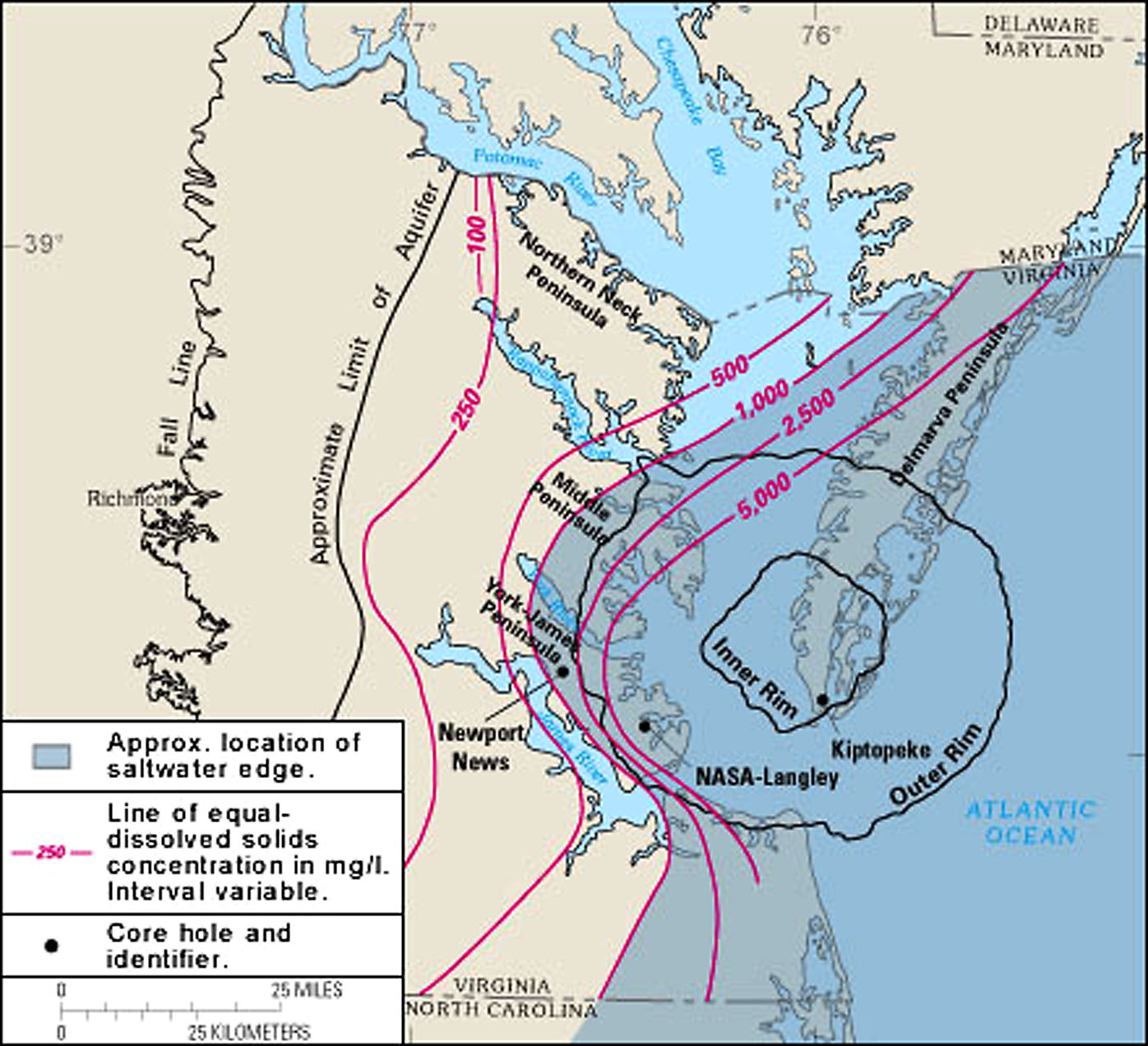The Chesapeake Bay can not only be seen from space, it essentially came from space.
An asteroid or huge chunk of ice slammed into Earth about 35 million years ago, splashing into the North Atlantic Sea, sending tsunami as far as the Blue Ridge Mountains and leaving a 90-km-wide hole at the mouth of what is now the bay.
But a newly published research paper written by U.S. Geological Survey scientists shows that wasn't the end of it. While drilling holes in southern Virginia to study the impact crater, the scientists discovered "the oldest large body of ancient seawater in the world," a survivor of that long gone sea, resting several hundred meters underground near the bay, according to the USGS.



